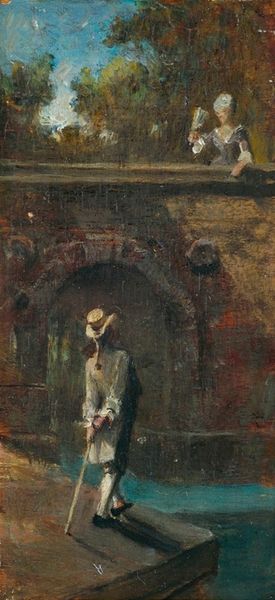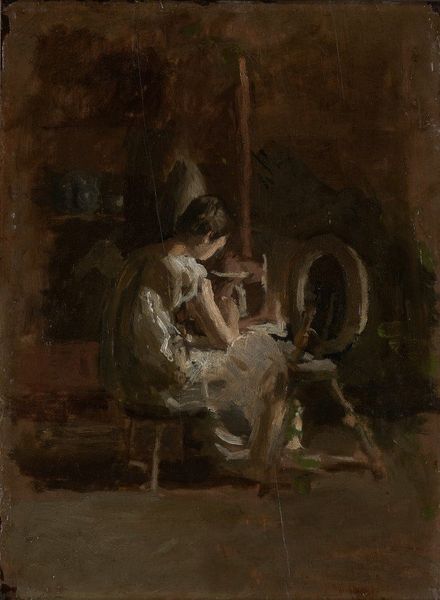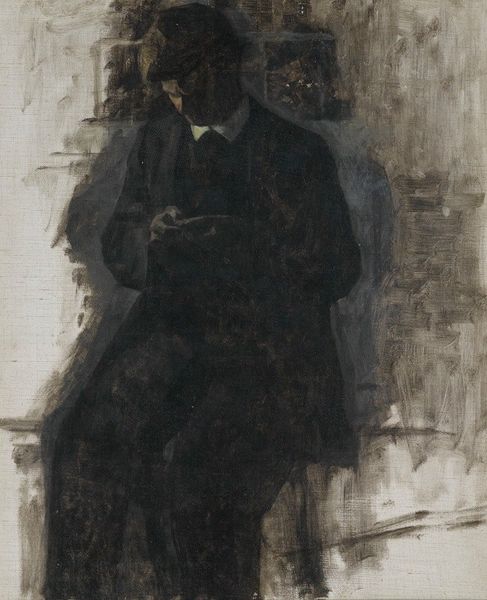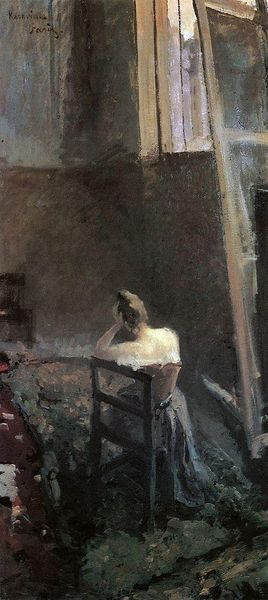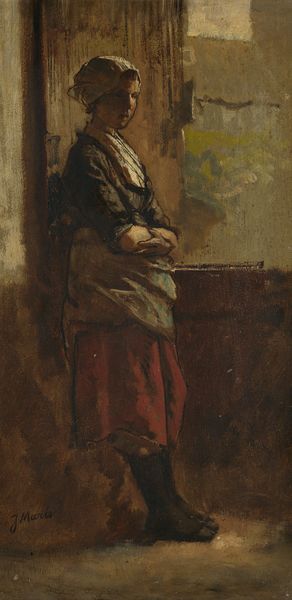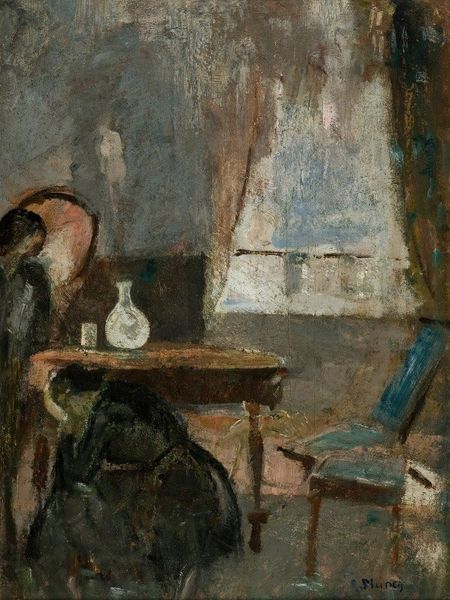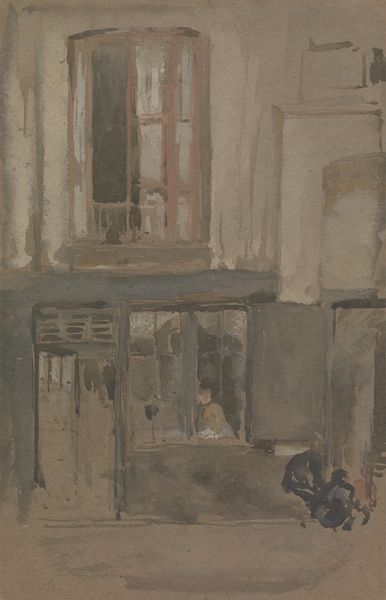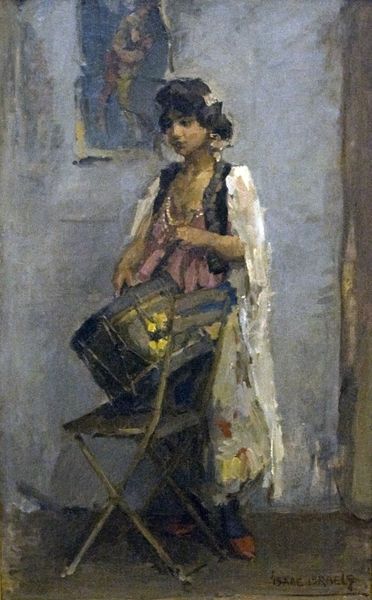
painting, oil-paint
#
portrait
#
figurative
#
painting
#
impressionism
#
oil-paint
#
oil painting
#
cityscape
#
genre-painting
Copyright: Public Domain: Artvee
Curator: Let's turn our attention to this genre painting by James Tissot: *À La Gare De L’est*. Note the skillful oil paint technique to define its style as impressionism. What are your immediate impressions of this work? Editor: My first thought is "gloomy romanticism"—a yearning encapsulated in that single figure standing at what looks like a very sooty train station. It's not just brown, it's sepia melancholy. Curator: Exactly, there's a notable tension between the dark, almost monochromatic palette and the potential dynamism of the scene, isn't it? I read that Tissot favored capturing contemporary life in his artwork; how do you view his take on urban modernity here? Editor: For me, it is less of celebration and more of quiet observation. The palette reduces everything to essential form, making the city fade. Notice the details, for instance: the distant smokestacks that imply motion even within a stationary scene, it feels deeply reflective—an invitation to ponder transitions, and that lady seems pretty determined about a life changing journey. Curator: Your interpretation aligns intriguingly with a deconstruction of binary oppositions present in structuralist analysis; in this composition, stasis challenges motion. Could the near monochromaticity be perceived as a deliberate formal choice that emphasizes emotional subtleties, reflecting existential complexities within quotidian scenes? Editor: In a world defined by contrasts I tend to trust instinct and emotion; there is undeniable romantic aura around the lady: so I am not at all surpised to imagine the painting as a farewell, a departure or maybe even some sort of pining. Curator: I appreciate that affective lens, but what of Tissot's artistic execution as a signifier? Do you think the choice of perspective plays a key role in guiding how the audience makes sense of the railway station scene in general? Editor: It's a window into someone's private world playing out in the most public of spaces, isn’t it? It lets us become active spectators of an intimate moment, regardless. You notice her, then the smokestacks, and suddenly you understand the fleeting essence of time and transit, a perfect combination with formal composition. Curator: So, looking back, would we both agree it encapsulates how an emphasis on structure enhances an emotional experience for the beholder and perhaps even deepens that meaning overall? Editor: Agreed. The structure accentuates her emotive narrative. This melancholic train station seems very true.
Comments
No comments
Be the first to comment and join the conversation on the ultimate creative platform.

